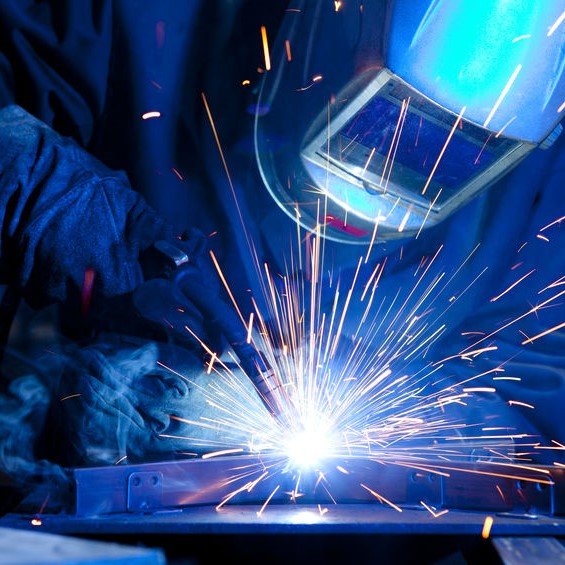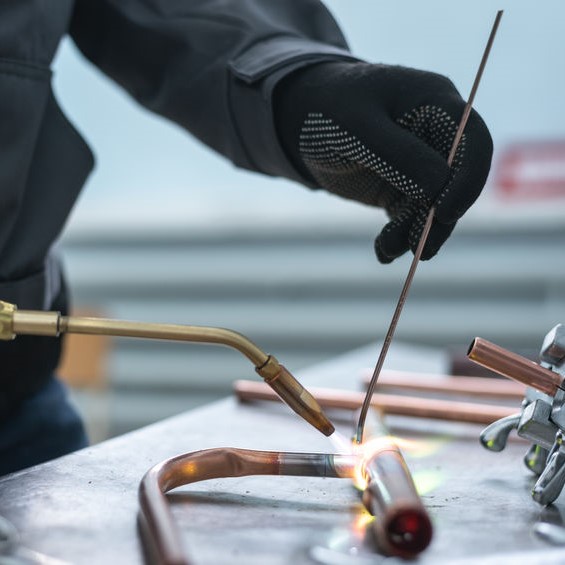
Welding for your home
May you do or don’t have any idea what welding and fabrication is, perhaps you aren’t interested … right now. But then, when you least expect it, at some point in your life, welding will become a necessity, even if it isn’t something you directly request yourself. Unless you live in a house made of nothing but cloth, plastic, and wood, there is some form of welding involved.
It is important to understand why welding is done and how it can affect our everyday lives. Welding is a process of fabrication that fuses two or more parts together using heat and/or pressure. Used most commonly on metal, welding is also done on thermoplastics and even wood, with the completed piece being referred to as a weldment.
If you aren’t sure where welding is used or how welding works, read on as we tell you about the 4 different types of welding and where welding can be done:
- MIG Welding: MIG welding is a form of arc welding, using a continuous electrode wire with shielding gas traveling through the welding gun which is protecting against contamination. This type of welding is common in the auto industry to repair exhaust, and in the construction industry for homes and other structures.
- TIG WELDING: TIG welding is also a form of ARC welding, using an electric arc made of tungsten, a tough metal that doesn’t burn off or dissolve. This type of welding is also referred to as fusion with or without a filler metal. TIG welding requires an argon or helium external gas supply and is found in the aerospace and auto industry as well as other industries. Farmers and ranchers use TIG welding for the equipment repairs.
- STICK WELDING: Stick welding is excellent for portability and found in the construction and maintenance industries for fabrication and repair, including underwater pipelines. Using a consumable, protected electrode, it softens and combines different types of metals by heating with an arc. As the stick melts, a protective cover melts and shields the welded area from oxygen and gases in the air.
- FLUX-CORED WELDING: This type of arc welding, similar to MIG welding in the fact it also uses a continuous wire. It combines a that continuous hollow electrode wire with a base metal and the flux inside the electrode wire is fed through the weld gun to the weld pool. Flux cored welding is used on thicker metals found in the machining industry.
Okay, so where is welding services at home?
We’ve mentioned welding in different industries, from auto to industrial machinery, aerospace, and waterlines, but where does welding appear in your home? Do you have HVAC in your home? Most of, probably 99% of that system has some type of welding.
Look the cover you lift off to change the filter, and examine the casing the HVAC system is housed in. Those are all parts that were manufactured separately then welded together. The water heater in your home has welded parts as does the water lines running through your home. The electrical breaker box or fuse box in your home has welded parts they are made from as does your metal garage door and the screen doors on the back and front of your home.
The ceiling fans throughout your home have welded parts put together with other parts that make these fans. Your dishwasher, refrigerator, stove/oven all have welded parts. Your lawn mower, weed eater, and other gardening and lawn tools have been welded. Each time you open, pick up, or use any metal item in your home, look for the welding. What you may see as a blue collar job is actually an important part of your everyday life.

Why welding is important?
Whether welding is temporary or permanent, doesn’t matter, it has an important element to our lives today. We aren’t always aware of things where welding is an essential part of of our conveniences. Without welding metals, plastics, even wood, many things we use day in, day out, would not exist.
Maybe this has opened your eyes to see where this blue collar job fits into your everyday life, regardless of what your daily activities or jobs consist of, but can you do welding without a welder? Not if you needing to connect two pieces of metal and expect a strong bond. However, there are some alternatives that can work, depending on the type of project you have on hand.
Some of those other options include brazing, which is like welding. It includes taking 2 pieces of metal and using heat to connect them but is using a torch with a filler rod or flux. It does require the use of certain rods with certain metals and may require acetylene and oxygen.There is also soldering, sort of like brazing, but is typically used on circuit boards and electronics, like your HVAC thermostat, your cell phone, computer, television, etc. You can also use riveting to connect two metal pieces together. Riveting is using a cylindrical post and insert it in a hole where the head of that post goes all the way through. This is usually used on in a temporary situation. Call 267-622-7158 today for your welding needs in Philadelphia, PA.
